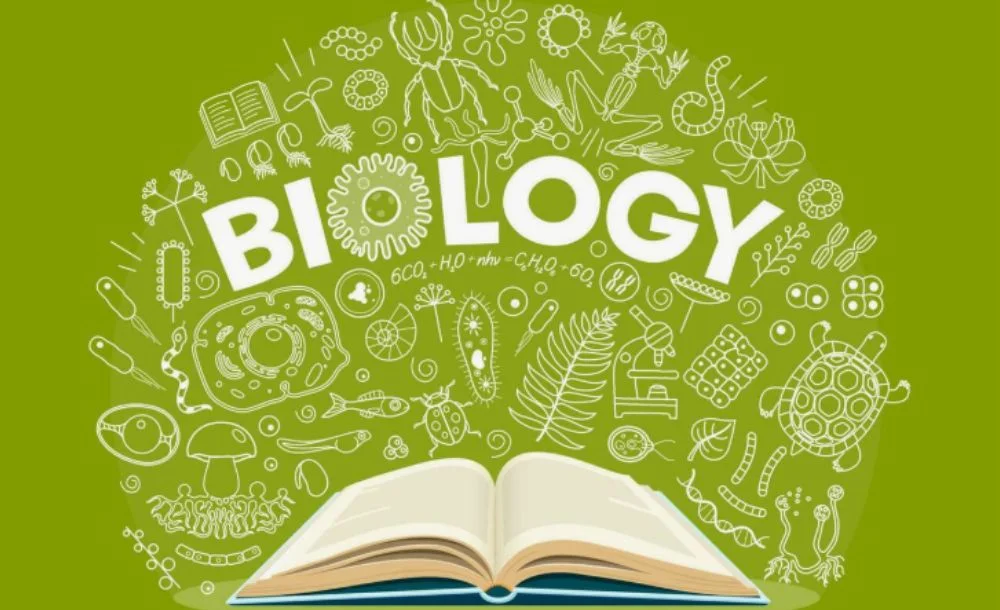In any biology textbook AP students study, one of the first and most essential chapters involves understanding the chemical foundation of life. Living organisms, no matter how complex, are governed by the same basic principles of chemistry. From the air we breathe to the water we drink, life is dependent on atoms, elements, and molecules that interact through specific types of bonds and reactions. Grasping these core chemical concepts is not just important for exams it provides the bedrock for all biological understanding.
Matter and Its Basic Components
The world around us including every living being is composed of matter, which is defined as anything that occupies space and has mass. All matter is made up of elements, and in the context of biology, only about 25 elements are crucial to life. Among these, just four carbon (C), hydrogen (H), oxygen (O), and nitrogen (N) make up roughly 96% of living organisms. These essential elements are emphasized early in the biology textbook AP, as they are the building blocks of biological molecules such as proteins, nucleic acids, carbohydrates, and lipids.
Each element consists of atoms, the smallest units that retain the chemical properties of the element. Understanding atomic structure is a core part of the AP Biology curriculum. Students are expected to know that atoms are composed of protons (positively charged particles), neutrons (neutral particles), and electrons (negatively charged particles). Protons and neutrons reside in the nucleus, while electrons orbit in energy shells around the nucleus. The arrangement of these electrons especially in the outermost shell determines how atoms bond and interact with one another to form molecules.
Isotopes and Radioactive Tracers
The concept of isotopes is another foundational idea presented in the biology textbook AP. Isotopes are atoms of the same element that differ in the number of neutrons. Some isotopes are stable, while others are radioactive and decay over time, releasing energy. These radioactive isotopes have practical applications in biological research and medicine. For instance, radioactive tracers are used in imaging techniques and in studying the pathways of biochemical reactions. Understanding the behavior of isotopes is vital, especially in experiments involving carbon dating or radioactive labeling of molecules.
Chemical Bonds and Molecular Interactions
Atoms do not exist in isolation in living systems. Instead, they interact to form chemical bonds, which are forces that hold atoms together in molecules. The biology textbook AP explains three primary types of chemical bonds: covalent bonds, ionic bonds, and hydrogen bonds. Covalent bonds involve the sharing of electrons between atoms and are the most common type of bond found in biological molecules. When atoms share electrons equally, a nonpolar covalent bond is formed. When electrons are shared unequally, a polar covalent bond results. These bonds form molecules like water and carbon dioxide, which are central to many life processes.
Ionic bonds, on the other hand, occur when one atom donates an electron to another, creating positively and negatively charged ions that attract each other. While not as strong in aqueous environments, ionic bonds play a critical role in the structure and function of compounds such as salts and in cellular processes involving ion gradients. Lastly, hydrogen bonds, though weak individually, are crucial in biological systems because of their cumulative strength and role in maintaining the shape of molecules like DNA and proteins.
Water The Solvent of Life
One of the most emphasized topics in the biology textbook AP is water, often referred to as the “universal solvent.” Water’s unique properties are central to its role in supporting life. Its molecular structure two hydrogen atoms covalently bonded to one oxygen atom creates a polar molecule, which allows for hydrogen bonding between water molecules. These hydrogen bonds give water several life-sustaining properties.
First, water has a high specific heat, meaning it can absorb large amounts of heat without undergoing drastic temperature changes. This property helps stabilize environments and internal conditions in organisms, promoting homeostasis. Water also exhibits cohesion and adhesion cohesion allows water molecules to stick to each other, and adhesion allows them to stick to other surfaces. These characteristics are critical for capillary action, the process by which water moves up plant roots and stems. Additionally, water’s lower density as a solid than as a liquid ensures that ice floats, insulating aquatic ecosystems in cold climates.
Furthermore, water’s ability to dissolve a wide range of substances makes it an effective medium for biochemical reactions. In the biology textbook AP, this is linked directly to topics such as osmosis, diffusion, and cellular transport, where the movement of substances in solution across membranes is essential to cell survival.
Carbon and the Diversity of Organic Molecules
Carbon is the backbone of all organic molecules, and its versatility is unmatched. With four valence electrons, carbon can form single, double, or triple covalent bonds and bond with many elements, especially hydrogen, oxygen, and nitrogen. In the biology textbook AP, carbon is discussed extensively for its role in forming the major macromolecules of life: carbohydrates, lipids, proteins, and nucleic acids.
Each of these macromolecules serves a specific function. Carbohydrates are energy sources and structural components; lipids store energy and make up cellular membranes; proteins perform a vast array of functions from catalysis to signaling; and nucleic acids store and transmit genetic information. The structure and function of these molecules are tightly linked, and understanding how they are built from monomers (like amino acids and nucleotides) is key to mastering later topics such as enzyme activity and DNA replication.
Enzymes and Biochemical Reactions
A major theme in the biology textbook AP is how chemical reactions sustain life. These reactions occur within the body in carefully controlled ways and are catalyzed by enzymes specialized proteins that speed up reactions by lowering the activation energy required. Enzymes are highly specific, binding only to particular substrates, and their function is affected by environmental conditions like temperature and pH.
Enzyme structure is determined by the sequence of amino acids and the folding of the polypeptide chain into a three-dimensional shape. This shape determines the active site, where substrates bind. The biology textbook AP explains the induced fit model, where the enzyme changes shape slightly to accommodate the substrate. Enzyme inhibitors, both competitive and non-competitive, are also important concepts, especially in relation to pharmaceutical drugs and metabolic regulation.
Understanding enzymes is crucial for learning about major cellular processes such as respiration and photosynthesis. These pathways involve a series of enzyme-mediated steps that convert energy into usable forms, like ATP, and they are consistently featured in AP exam questions.
Chemical Cycles and the Biosphere
Beyond the individual cell, the biology textbook AP explores how chemical elements cycle through ecosystems. Elements like carbon, nitrogen, and phosphorus are reused and recycled in biogeochemical cycles. These cycles involve interactions between biological, geological, and chemical processes that sustain life on Earth.
For example, the carbon cycle traces how carbon moves from the atmosphere into living organisms through photosynthesis, is released through respiration, and is stored long-term in fossil fuels. The nitrogen cycle explains how atmospheric nitrogen is fixed by bacteria, taken up by plants, and passed through the food chain. Disruptions to these cycles often caused by human activity can have profound impacts on global ecosystems and climate.
Application and Analysis in the AP Biology Exam
The biology textbook AP not only provides theoretical knowledge but also prepares students for the types of analysis and application required by the College Board. The AP Biology exam emphasizes scientific thinking, data interpretation, and the ability to connect concepts across different domains of biology. Students are expected to read experimental results, draw conclusions, and propose follow-up experiments. This includes analyzing graphs showing enzyme kinetics, interpreting pH changes in buffer solutions, or predicting the outcome of altering variables in a photosynthesis experiment.
In this context, the chemical concepts learned in the opening chapters of the biology textbook AP are not isolated facts but tools for understanding the deeper principles of life. Whether it’s explaining how ATP stores energy, how a mutation in DNA affects protein structure, or how climate change alters the carbon cycle, students must apply their chemical knowledge in a biological context.
Conclusion
The chemical basis of life is the first chapter in any biology textbook AP for a reason it forms the foundation for everything that follows. From the function of a single enzyme to the dynamics of an entire ecosystem, chemical principles are at play. Students who take the time to understand atoms, molecules, bonding, water properties, and macromolecules will find themselves better prepared for the complexities of molecular biology, genetics, evolution, and ecology.
Mastery of these topics not only improves performance on the AP exam but also develops a deeper appreciation for how life functions at every level. In essence, the biology textbook AP serves as both a guide and a gateway, opening the door to a world of discovery through the lens of chemistry and biology combined.







